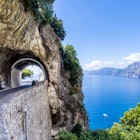
Aug 28, 2024 ŌĆó 8 min read

Aug 9, 2024 ŌĆó 4 min read

The sunbathing and swimming are indeed fabulous in Malta ŌĆō yet thereŌĆÖs much to do in the cooler months, too. Jaroslav Moravcik/Shutterstock
Renowned as one of EuropeŌĆÖs sunniest destinations, the islands that make up Malta are indeed an ideal place for a vacation filled with swims and lying out for hours.
In the middle of the Mediterranean Sea ŌĆō 96km (60 miles) south of Sicily and 386km (240 miles) east of Tunisia ŌĆō the diminutive but mighty country has been a tourism mainstay for generations thanks to its 300+ annual days of sun. This reputation, however, brings crowds of holiday makers, digital nomads and English-language students, all of whom naturally drive the prices up in the peak summer months.
And yet there is an appeal to this archipelago in every season.
Visiting in the shoulder seasons of early spring or late fall, as well as in the off season of winter, provides travelers with better temperatures for hiking, rock climbing, cycling and taking in the islandsŌĆÖ natural beauty, as well as more-comfortable temperatures for exploring the astonishing prehistoric temples here.
Bottom line: Malta is much more than a beach destination, and our season-by-season breakdown will help you know what to expect whatever time of year you visit.

Malta and Gozo are home to some of the oldest temples in the world, as well as a wealth of stunning coastal trails to hike. SpringŌĆÖs sunny but relatively cool days make for the best moments to experience both. The weather is bright and comparatively fresh from March to May, with maximum highs of 18┬░ŌĆō24┬░C (64┬░ŌĆō75┬░F). You wonŌĆÖt need to worry about getting scorched when visiting MaltaŌĆÖs impressive temples, the oldest and best preserved being the limestone wonder ─”agar Qim and its smaller neighbor Mnajdra. Archeologists have dated the monuments to as far back as 3700 BCE, and suggested that the island's prehistoric inhabitants built them to worship the sun and mark the changing seasons.
Hiking the wildly scenic loops and paths along MaltaŌĆÖs coast ŌĆō in particular, the Dingli Cliffs and Fawwara Trail ŌĆō is also best done at this time of year, before the summer heat sizzles. Spring also brings Easter ceremonies, which the Maltese take very seriously. Week-long celebrations include parades, markets and local bakers selling figolli, sweet, almond-filled cakes shaped like lambs or bunnies.

Maltese summers get hot. Very hot, with highs of 30┬░ŌĆō38┬░C (86┬░ŌĆō100┬░F) and up to 85% humidity. From June until late September is the best time to visit Malta and GozoŌĆÖs excellent beaches by day (itŌĆÖs really too sweaty to consider doing anything else) ŌĆō then head to a festival of local festa once the sun has set. International music festivals take place all season long. Produced by the music network every year since 2007, brings huge pop acts to Floriana ŌĆō with all tickets free. has been inviting EDM artists to the island since 2016. Film festivals like (short films) and (features) also run through the summer.
Festa season truly reflects Maltese culture, with each village, town and city in producing its own event. The settlementŌĆÖs patron saint is inevitably celebrated every year with a procession, food market and fireworks display, the latter of which get very competitive from town to town. Since thereŌĆÖs a festa happening somewhere pretty much every weekend, if youŌĆÖre visiting in the summer months. YouŌĆÖre guaranteed a brilliant view.

The best weather in Malta arrives in mid-September and lasts until late October, when the days are still long and sun-drenched but the peak summer heat begins to break. This means you can hit the beach and dive into the still-mild Mediterranean ŌĆō while also managing some sightseeing without melting. Wandering the picturesque lanes of Mdina, visiting the Roman ruins of a villa in Rabat, taking in Neolithic temples like Tarxien and the subterranean Hypogeum, or hopping on a boat to Comino or the Blue Lagoon wonŌĆÖt leave you lobster red (still, donŌĆÖt forget the SPF 50).
Our favorite swim spots in Malta include St PeterŌĆÖs Pool (look out for Leli and his diving dog); SliemaŌĆÖs salt pans; Ghar Lapsi, near ─”a─Īar Qim; the golden terracotta sands of Ramla Bay; and the natural phenomenon of GozoŌĆÖs Inland Sea. Still, on islands as small as Malta and Gozo, youŌĆÖre never far from a wonderful spot for jumping into the sea, wherever you find yourself.

The November-to-February period is the archipelagoŌĆÖs off season, with January and February being the rainiest months. (This also makes them the greenest ones.) The winter months are the most affordable time in Malta, too, with good deals on accommodation. Hostels and Airbnbs whose prices spike in the summer (now considered May to October) become accessible options ŌĆō sometimes even bargains ŌĆō in the cooler period.
Winter also is a great time of year for outdoor pursuits like hiking, rock climbing and even scuba diving. You can take the plunge all year long here, with an impressive number of shipwrecks close to land (such as HMS Maori, near Valletta). Visibility is generally very good ŌĆō unless thereŌĆÖs a storm, of course.


Aug 28, 2024 ŌĆó 8 min read

Dec 16, 2024 ŌĆó 14 min read

Dec 5, 2024 ŌĆó 7 min read

Dec 3, 2024 ŌĆó 11 min read




